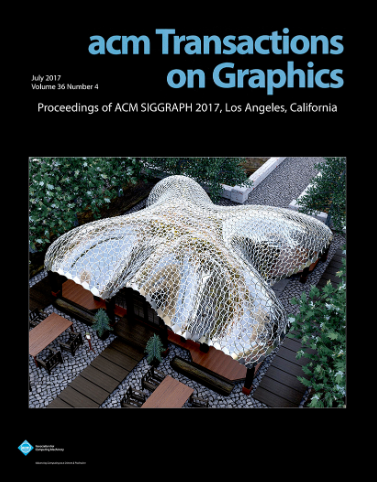高斯不透明度场:无边界场景中的高效自适应曲面重构
IF 9.5
1区 计算机科学
Q1 COMPUTER SCIENCE, SOFTWARE ENGINEERING
引用次数: 0
摘要
最近,三维高斯拼接技术(3DGS)展示了令人印象深刻的新颖视图合成结果,同时允许实时渲染高分辨率图像。然而,由于三维高斯的显性和不连续性,利用三维高斯进行曲面重建面临着巨大挑战。在这项工作中,我们提出了高斯不透明度场 (GOF),这是一种在无边界场景中进行高效、高质量和自适应表面重建的新方法。我们的 GOF 源自基于光线跟踪的三维高斯体积渲染,通过识别其水平集,可直接从三维高斯中提取几何图形,而无需像以前的工作那样求助于泊松重建或 TSDF 融合。我们将高斯的表面法线近似为射线-高斯交点平面的法线,从而能够应用正则化,显著增强几何效果。此外,我们还开发了一种利用行进四面体的高效几何图形提取方法,其中的四面体网格由三维高斯诱导而成,因此能适应场景的复杂性。我们的评估结果表明,GOF 在曲面重建和新颖视图合成方面超越了现有的基于 3DGS 的方法。此外,它在质量和速度上都优于甚至超过了神经隐式方法。本文章由计算机程序翻译,如有差异,请以英文原文为准。
Gaussian Opacity Fields: Efficient Adaptive Surface Reconstruction in Unbounded Scenes
Recently, 3D Gaussian Splatting (3DGS) has demonstrated impressive novel view synthesis results, while allowing the rendering of high-resolution images in real-time. However, leveraging 3D Gaussians for surface reconstruction poses significant challenges due to the explicit and disconnected nature of 3D Gaussians. In this work, we present Gaussian Opacity Fields (GOF), a novel approach for efficient, high-quality, and adaptive surface reconstruction in unbounded scenes. Our GOF is derived from ray-tracing-based volume rendering of 3D Gaussians, enabling direct geometry extraction from 3D Gaussians by identifying its levelset, without resorting to Poisson reconstruction or TSDF fusion as in previous work. We approximate the surface normal of Gaussians as the normal of the ray-Gaussian intersection plane, enabling the application of regularization that significantly enhances geometry. Furthermore, we develop an efficient geometry extraction method utilizing Marching Tetrahedra, where the tetrahedral grids are induced from 3D Gaussians and thus adapt to the scene's complexity. Our evaluations reveal that GOF surpasses existing 3DGS-based methods in surface reconstruction and novel view synthesis. Further, it compares favorably to or even outperforms, neural implicit methods in both quality and speed.
求助全文
通过发布文献求助,成功后即可免费获取论文全文。
去求助
来源期刊

ACM Transactions on Graphics
工程技术-计算机:软件工程
CiteScore
14.30
自引率
25.80%
发文量
193
审稿时长
12 months
期刊介绍:
ACM Transactions on Graphics (TOG) is a peer-reviewed scientific journal that aims to disseminate the latest findings of note in the field of computer graphics. It has been published since 1982 by the Association for Computing Machinery. Starting in 2003, all papers accepted for presentation at the annual SIGGRAPH conference are printed in a special summer issue of the journal.
 求助内容:
求助内容: 应助结果提醒方式:
应助结果提醒方式:


